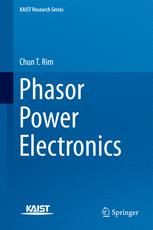

Most ebook files are in PDF format, so you can easily read them using various software such as Foxit Reader or directly on the Google Chrome browser.
Some ebook files are released by publishers in other formats such as .awz, .mobi, .epub, .fb2, etc. You may need to install specific software to read these formats on mobile/PC, such as Calibre.
Please read the tutorial at this link: https://ebookbell.com/faq
We offer FREE conversion to the popular formats you request; however, this may take some time. Therefore, right after payment, please email us, and we will try to provide the service as quickly as possible.
For some exceptional file formats or broken links (if any), please refrain from opening any disputes. Instead, email us first, and we will try to assist within a maximum of 6 hours.
EbookBell Team

5.0
50 reviewsThis book presents a comprehensive introduction to the principles of power electronics, focusing on the switched transformer concept and phasor transformation techniques as employed in the analysis and design of power electronic circuits. Phasor transformations, as introduced in this book, make the time-varying nature of a switching converter simple and easy to handle, transforming it into an equivalent time-invariant circuit.
The book starts with an introduction to the philosophy and fundamental principles of power electronics. The switched transformer concept, which is applicable to any switching converter, is introduced, and it is shown how DC-DC converters analyses are then so straightforward that very little equational manipulation is needed. Then the phasor transformation techniques are comprehensively explained over three parts. Single phase and multi-phase AC systems are dealt with through the single phase phasor transformation and circuit DQ transformation, respectively. A general unified phasor transformation is then introduced for the static and dynamic cases. The final part of the book considers current and potential extensions of the technique in various fields of application, including wireless power transfer, signal processing, power systems and renewable energy.
The book avoids the piece-wise linear circuit models used in other titles, with which the mathematical results become too complicated to be used in practice. No cumbersome equations or matrix manipulations are needed with the phasor transformation techniques introduced in this book. It will be a valuable reference source for engineering students and practising researchers in power electronics and related areas.